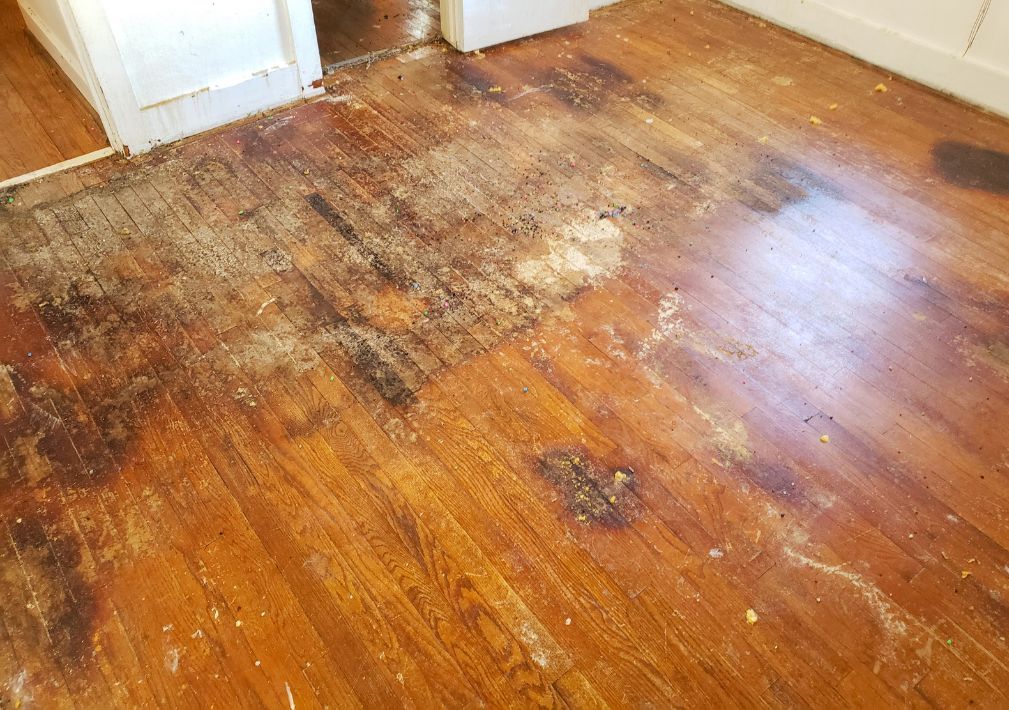What is the Average Cost of Water Damage in Wilmington, NC?

Table of Contents
- 1. Factors Affecting Water Damage Costs in Wilmington, NC
- 2. Breakdown of Water Damage Costs in Wilmington, NC
- 3. Hidden Costs of Water Damage Restoration
- 4. How Insurance Impacts Water Damage Costs
- 5. Why Professional Water Damage Restoration Matters
- 6. The Final Verdict on Water Damage Costs in Wilmington, NC
- 7. Frequently Asked Questions About Water Damage Restoration Costs
The average cost of water damage restoration in Wilmington, NC, ranges from $1,200 to $5,000, depending on the extent of the damage, affected materials, and the required cleanup process. Factors like the type of water, the size of the affected area, and the response time all influence the final cost. However, in severe cases involving structural damage or mold remediation, costs can rise to $10,000 or more.
Water damage can occur due to various reasons, including plumbing leaks, roof leaks, appliance malfunctions, or natural disasters like hurricanes and heavy rainfall. If left untreated, water damage can lead to structural weakening, mold growth, and even health hazards. That’s why it’s crucial to understand the financial implications and take timely action with professional restoration services.
Factors Affecting Water Damage Costs in Wilmington, NC
Several factors determine the cost of water damage restoration in Wilmington. Here’s what influences pricing:
- Type of Water:
-
-
- Clean Water: Least expensive to clean, typically from a broken pipe or supply line.
- Gray Water: More costly due to contamination risks from appliances or sink overflows.
- Black Water: The most expensive due to hazardous waste, often from sewage backups, flooding, or stormwater intrusion.
-
- Extent of Damage:
-
-
- Minor leaks affecting a small area cost significantly less, typically ranging from $500 to $1,500.
- Severe flooding requiring extensive structural repairs can push costs beyond $10,000.
-
- Materials Affected:
-
-
- Hardwood floors, drywall, and carpeting require different levels of restoration.
- Specialized materials like insulation and furniture may increase expenses.
- Some materials are more prone to water absorption, making their restoration more difficult and expensive.
-
- Response Time:
-
-
- Quick mitigation prevents mold growth and additional structural damage.
- The longer water sits, the deeper it soaks into materials, making extraction and drying more expensive.
- Delays in professional restoration can escalate costs and increase the likelihood of insurance complications.
-
- Labor and Equipment Costs:
-
- Advanced drying technology, industrial dehumidifiers, and antimicrobial treatments influence pricing.
- Highly skilled technicians ensure thorough restoration and may cost more but prevent future complications.
- Additional labor may be required for extensive repairs, adding to the overall expenses.
Breakdown of Water Damage Costs in Wilmington, NC
A general cost breakdown for water damage restoration includes:
- Water Extraction ($500 – $3,000): Removing standing water is the first step and varies based on the amount of water present. Larger areas with extensive flooding will require more powerful equipment and labor-intensive efforts, increasing costs.
- Drying and Dehumidification ($300 – $1,500): Prevents mold and structural damage, using specialized drying equipment. High humidity levels in Wilmington can prolong the drying process, increasing the need for industrial-grade dehumidifiers.
- Carpet and Flooring Repair ($200 – $5,000): Costs depend on material type, severity of damage, and whether replacements are needed. Waterlogged carpets may require full replacement, while hardwood floors can be restored if action is taken quickly.
- Drywall and Ceiling Repair ($500 – $3,000): Damaged walls and ceilings need patching, drying, or complete replacement. Structural damage from water exposure can lead to crumbling drywall and sagging ceilings, requiring urgent intervention.
- Mold Remediation ($1,000 – $6,000): Mold growth requires thorough removal, sanitization, and air quality control. Since Wilmington has a humid climate, mold can spread rapidly, making professional remediation essential.
- Structural Repairs ($2,000 – $10,000+): If water has compromised the integrity of a building, foundation, or framing, extensive repairs will be required. Wood rot and corrosion can weaken support beams, posing serious safety risks.
Voda Cleaning & Restoration of Wilmington provides expert services to assess and restore water-damaged properties efficiently, ensuring you get high-quality, cost-effective solutions.
Hidden Costs of Water Damage Restoration
While the visible costs of water damage restoration are easy to estimate, there are often hidden expenses that homeowners might not anticipate. Some of these include:
- Increased Utility Bills: Excess water can cause your HVAC system to work harder, leading to higher energy costs.
- Temporary Relocation Costs: In severe cases, homeowners may need to stay in hotels or temporary housing during restoration, adding to the overall financial burden.
- Furniture Replacement: Even if structural repairs are covered by insurance, furniture that absorbs water may be irreparable and require replacement.
- Loss of Personal Items: Water damage can destroy electronics, documents, and sentimental belongings, many of which may not be fully recoverable.
- Long-Term Health Costs: Mold exposure from untreated water damage can lead to respiratory problems and other health concerns, which might require medical expenses in the long run.
Voda Cleaning & Restoration of Wilmington helps customers navigate these hidden costs by providing thorough assessments and preventative solutions to minimize unexpected financial burdens.
How Insurance Impacts Water Damage Costs
Many homeowners’ insurance policies cover water damage, but specifics vary. Important considerations include:
- Covered vs. Uncovered Damage:
-
-
- Sudden leaks or burst pipes are usually covered.
- Gradual damage from long-term leaks or neglect may not be included.
- Natural flooding requires a separate flood insurance policy.
-
- Deductibles and Limits:
-
-
- Policies have coverage limits and require deductibles before benefits apply.
- Higher coverage limits may require increased premiums but offer greater financial protection.
-
- Additional Coverage Options:
-
- Flood insurance is separate and required for natural flooding events, often necessary for properties in flood-prone areas like Wilmington.
- Some policies include endorsements for water backup coverage, which may be helpful for homes with sump pumps.
If you’re unsure about coverage, Voda Cleaning & Restoration of Wilmington can work with your insurance provider to streamline the claims process. Additionally, we recommend reviewing your policy annually to ensure you have adequate coverage for water-related emergencies.
Why Professional Water Damage Restoration Matters
Hiring professionals ensures a thorough and safe restoration process. Key benefits include:
- Fast and efficient water extraction.
- Prevention of mold and long-term structural damage.
- Expert assessment of hidden water damage.
- Proper sanitization and deodorization to prevent future issues.
- Use of industrial-grade equipment to accelerate drying times and prevent secondary damage.
DIY cleanup often fails to address hidden moisture, leading to further property damage. Additionally, attempting to clean contaminated water without proper protective gear and equipment can pose health risks. Trusting experienced professionals like Voda Cleaning & Restoration of Wilmington ensures reliable results while minimizing future risks.
The Final Verdict on Water Damage Costs in Wilmington, NC
Water damage restoration costs in Wilmington, NC, vary based on several factors, including water type, damage extent, and material impact. Costs can range from minor repairs to extensive structural restorations exceeding $10,000. However, fast response times and professional services can significantly mitigate expenses.
Voda Cleaning & Restoration of Wilmington is your trusted partner in water damage recovery. Contact us today for an expert assessment and let us help you restore your property to its pre-damage condition!
Frequently Asked Questions About Water Damage Restoration Costs
How does Wilmington’s climate impact water damage restoration?
The coastal climate of Wilmington contributes to higher humidity levels, which can prolong drying times and increase the risk of mold growth. Professional dehumidification is essential for complete moisture removal.
What are the biggest mistakes homeowners make after water damage?
Waiting too long to seek professional help, attempting DIY repairs without proper knowledge, and failing to document the damage for insurance purposes can all lead to higher costs and extended restoration times.
Can water damage lead to electrical issues?
Yes, water infiltration can affect electrical wiring, outlets, and circuit breakers, posing a fire hazard. It’s important to have an electrician assess any affected areas before restoring power.
How can I prevent future water damage in my home?
Regular maintenance of plumbing systems, inspecting your roof for leaks, installing sump pumps, and using water detection alarms can help prevent future incidents.
Does professional restoration include odor removal?
Yes, professional water damage restoration includes deodorization to eliminate musty odors caused by mold and bacteria. Specialized equipment such as air scrubbers and ozone treatments are used to restore indoor air quality.
More Blogs
Categories

